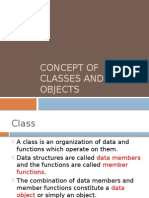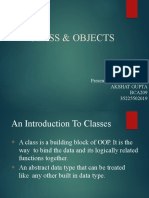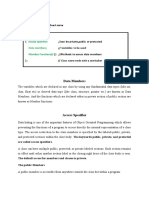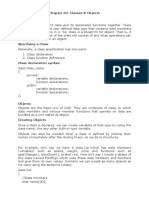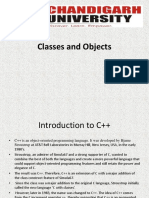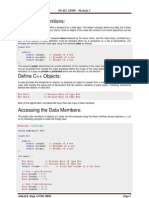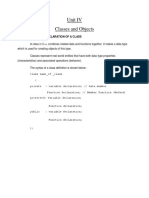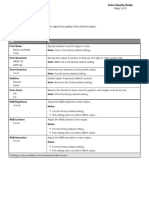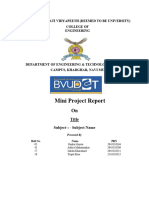0% found this document useful (0 votes)
22 views15 pagesBasic Elements of C++
The document provides an overview of the basic structure of C++ programming, including classes, objects, data members, member functions, and access specifiers. It explains the concepts of static members, constructors, destructors, and their usage with examples. Additionally, it highlights the importance of encapsulation and data hiding in object-oriented programming.
Uploaded by
Priya SureshCopyright
© © All Rights Reserved
We take content rights seriously. If you suspect this is your content, claim it here.
Available Formats
Download as DOCX, PDF, TXT or read online on Scribd
0% found this document useful (0 votes)
22 views15 pagesBasic Elements of C++
The document provides an overview of the basic structure of C++ programming, including classes, objects, data members, member functions, and access specifiers. It explains the concepts of static members, constructors, destructors, and their usage with examples. Additionally, it highlights the importance of encapsulation and data hiding in object-oriented programming.
Uploaded by
Priya SureshCopyright
© © All Rights Reserved
We take content rights seriously. If you suspect this is your content, claim it here.
Available Formats
Download as DOCX, PDF, TXT or read online on Scribd
/ 15



